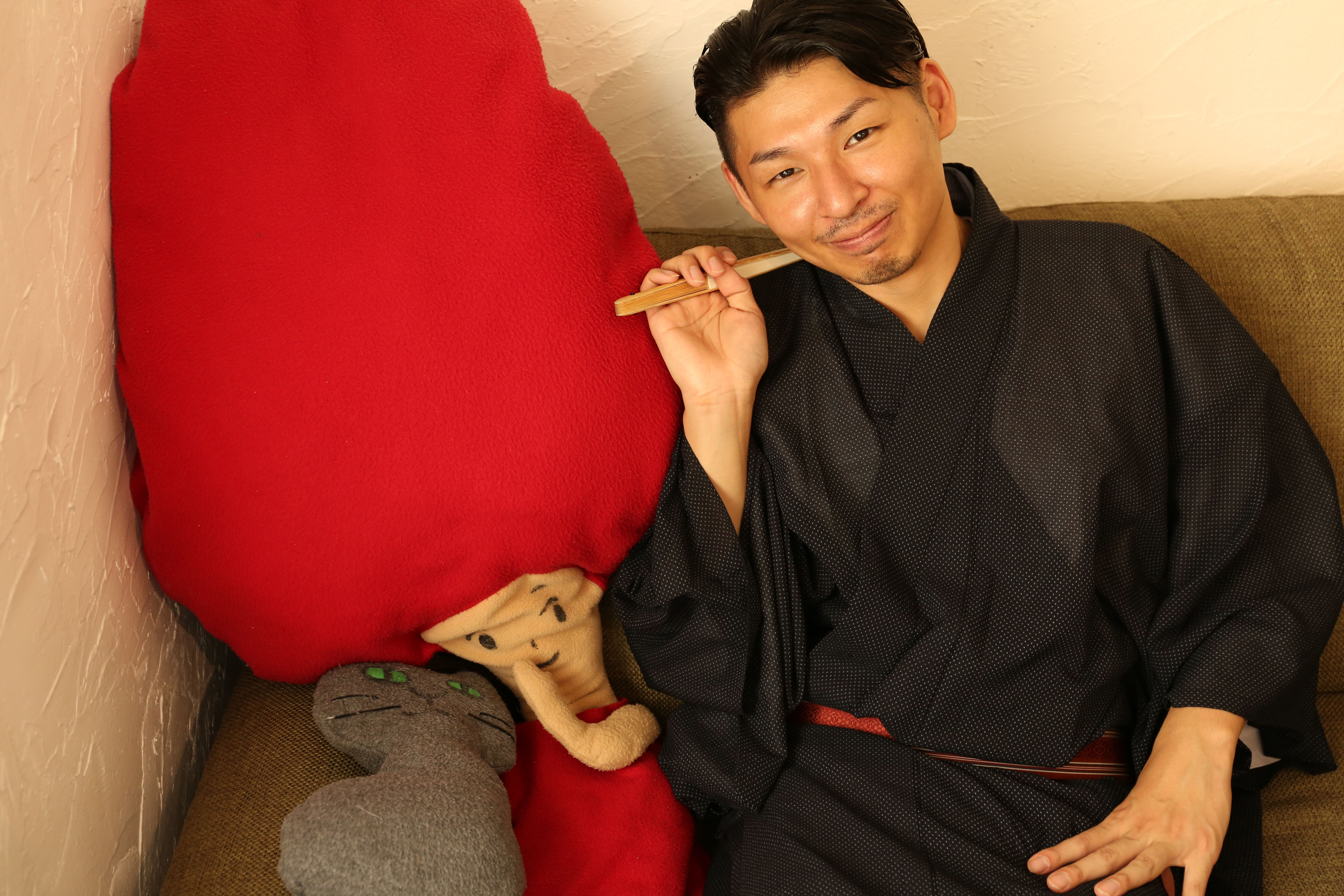The midday sky swirls with typhoon clouds as I set off to explore a little shopping area known as Tabata Ginza in Tokyo's Kita Ward. I'm thrilled to be in the charismatic company of a third-generation rakugoka (traditional storyteller) who lives nearby. I met Mikio Katsura, 32, by chance in Tabata last month, and he has kindly agreed to give me an insider's tour of the area.
Katsura and I meet up at the western edge of the shopping area, a 15-minute walk southwest of Tabata Station. At first, we seem to just follow our noses toward a delicious fragrance issuing from bread shop Kawamura. Plump brown-crusted loaves cool on outdoor racks, advertising their sweetness in the breeze. If there are people tending the bakery, though, I can't see them. Gazing at Kawamura's sign, done in magic marker on Styrofoam under an awning of candy-corn colors, I begin to glean the area's unpretentious vibe.
Katsura nips down a thin alleyway and points out an old home painted hippy-style with fish and blue waves on the exteriors. Maruike House, as the 60-year-old abode is known, is "maybe open," Katsura says, laughing. The door to the first floor entrance is, at any rate, propped ajar by a dehydrated plant in a pot. Creeping inside, we find a darkened corridor of six dorm-like rooms, all closed. A row of green metal mailboxes suggests the existence of ateliers and tiny shops, most with late afternoon or weekend visiting hours. Nothing stirs now, though; it's too early. Undaunted, Katsura climbs the outer stairs to the second floor, and I follow. There, inside shop Kimono Mamesaku, owner Yukiko Takahashi, 42, seems as thrilled to see us as we are her.


















With your current subscription plan you can comment on stories. However, before writing your first comment, please create a display name in the Profile section of your subscriber account page.